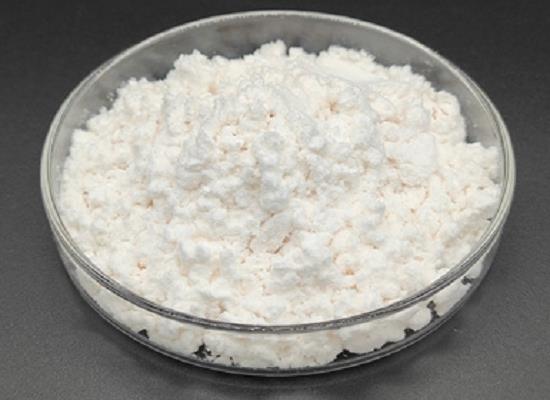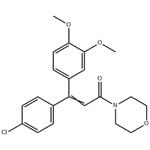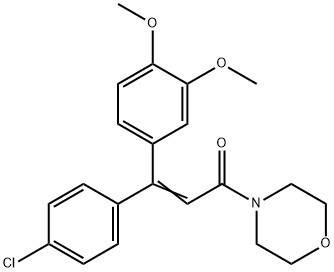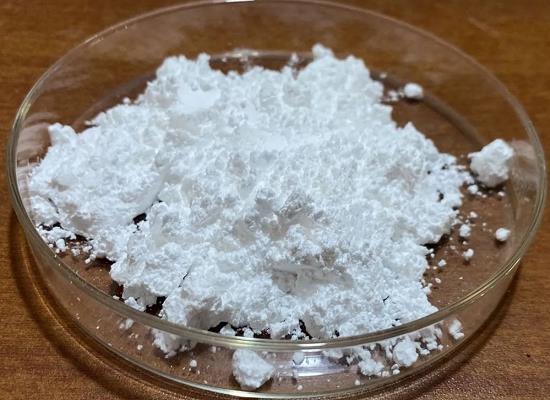Dimethomorph: Pharmacokinetics, Mammalian Toxicity and Ecotoxicology
General Description
Dimethomorph is a fungicide widely used in agriculture for controlling diseases caused by oomycete fungi. Studies have shown that the substance is readily absorbed, rapidly metabolized, and efficiently eliminated from the body. It is widely distributed throughout the body but does not accumulate. While acute toxicity studies indicate low toxicity, repeated dose toxicity studies suggest adverse effects on the liver and testes in rats and dogs. Dimethomorph is classified as a reproductive toxicant category 1B and an endocrine disruptor. Ecotoxicological studies indicate low risk to birds, mammals, aquatic organisms, bees, non-target arthropods, soil macroorganisms, and non-target terrestrial plants, except for high chronic risk to fish and aquatic invertebrates in field uses in strawberries without mitigation measures.

Figure 1. Dimethomorph
Pharmacokinetics
Dimethomorph is a fungicide widely used in agriculture to control diseases caused by oomycete fungi. In rats, after oral administration of dimethomorph, rapid excretion was observed in both urine and feces, with up to 90% of the administered dose excreted in feces. This suggests that absorption of dimethomorph occurs quickly, as metabolites were rapidly eliminated from the body. Urinary metabolites resulted from demethylation of the dimethoxyphenyl ring and oxidation of the morpholine ring. Biliary metabolites accounted for most of the fecal excretion following low-dose treatment. The major biliary metabolites were glucuronides of one and possibly two of the compounds produced by demethylation of the dimethoxyphenyl ring. The biological half-life of dimethomorph in rats was found to be approximately three hours for males and six hours for females following low-dose (10 mg/kg) treatment, while high-dose (500 mg/kg) treatment resulted in a half-life of 11 hours for males and about 6 hours for females. Overall, these findings suggest that dimethomorph is readily absorbed, rapidly metabolized, and efficiently eliminated from the body. 1
Mammalian Toxicity
Dimethomorph is an active substance used in pesticides, which has been assessed for its mammalian toxicity profile based on various guidance documents. The substance consists of two geometric isomers, and the toxicological reference values and target organs derived from studies with dimethomorph can be applied to both isomers. The substance is orally absorbed at a rate of over 80% and is excreted primarily through feces and urine. It is widely distributed throughout the body, with the highest levels found in the gastrointestinal tract and liver, but no evidence of accumulation was observed. Metabolism studies showed demethylation, hydroxylation, and degradation of the morpholine ring as the main metabolic pathway. In acute toxicity studies, dimethomorph showed low toxicity when administered orally, dermally, or by inhalation to rats. Repeated dose toxicity studies indicated adverse effects on the liver and testes in rats and dogs, with the rat being the most sensitive species. Genotoxicity studies suggested that dimethomorph is unlikely to be genotoxic. Regarding reproductive toxicity, decreased pregnancy duration, delayed puberty, and reduced growth were observed in rats. No teratogenic effects were observed in rats or rabbits, but behavioral effects without neuro-histopathological correlates were observed in rats at the lowest dose level tested. Dimethomorph is classified as a reproductive toxicant category 1B and an endocrine disruptor. Exposure estimates for operators and workers vary depending on the use and protective measures taken. The impurities Z12 and Z33 were identified as relevant but not of concern at the proposed levels. The toxicological profile of metabolites is considered covered by the parent compound, but further studies are needed to clarify the genotoxic potential of morpholine, a metabolite of dimethomorph. Overall, dimethomorph has been found to have low acute toxicity and specific target organ effects in toxicity studies, with reference values set based on relevant short-term and developmental studies. 2
Ecotoxicology
Dimethomorph is a pesticide that has been subjected to risk assessment based on various documents, including European Commission reports, SETAC guidelines, and EFSA studies. The ecotoxicology of dimethomorph was evaluated with respect to its impact on birds, mammals, aquatic organisms, bees, non-target arthropods, soil macroorganisms, and non-target terrestrial plants. The batches used in the ecotoxicity studies were considered representative of the technical specifications. Low risk to birds and mammals was indicated for field uses of dimethomorph, while high long-term risk to mammals was found for all representative field and walk-in tunnel uses. Several options were discussed to refine the long-term risk, but high risk was still indicated after refinements. Low risk to aquatic organisms was concluded for grapes and strawberries, but high chronic risk to fish and aquatic invertebrates was indicated for field uses in strawberries without mitigation measures. Low risk was concluded for honeybees, but high acute risk was found for bumblebees in treated crops. Low risk was found for non-target arthropods, soil macroorganisms, and non-target terrestrial plants. A low risk was also concluded for the impact of dimethomorph on biological methods for sewage treatment. 2
Reference
1. Dimethomorph. National Center for Biotechnology Information, 2024, PubChem Compound Summary for CID 86298.
2. European Food Safety Authority (EFSA), Alvarez F, Arena M, et al. Peer review of the pesticide risk assessment of the active substance dimethomorph. EFSA J. 2023;21(6):e08032.
Related articles And Qustion
Lastest Price from Dimethomorph manufacturers

US $0.00/kg2025-11-19
- CAS:
- 110488-70-5
- Min. Order:
- 1kg
- Purity:
- 98%
- Supply Ability:
- Customise

US $10.00/KG2025-04-21
- CAS:
- 110488-70-5
- Min. Order:
- 1KG
- Purity:
- 80%
- Supply Ability:
- 10 mt



